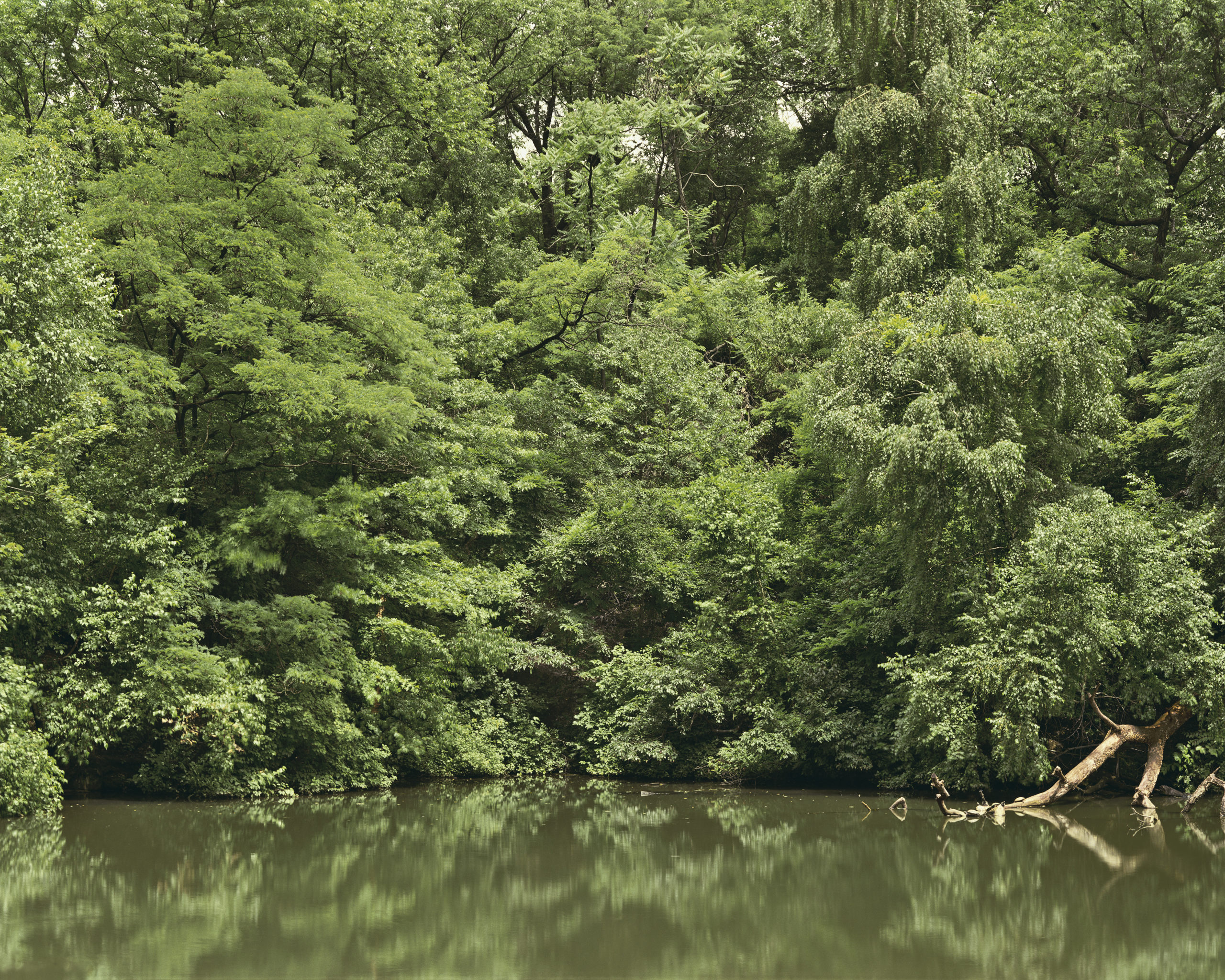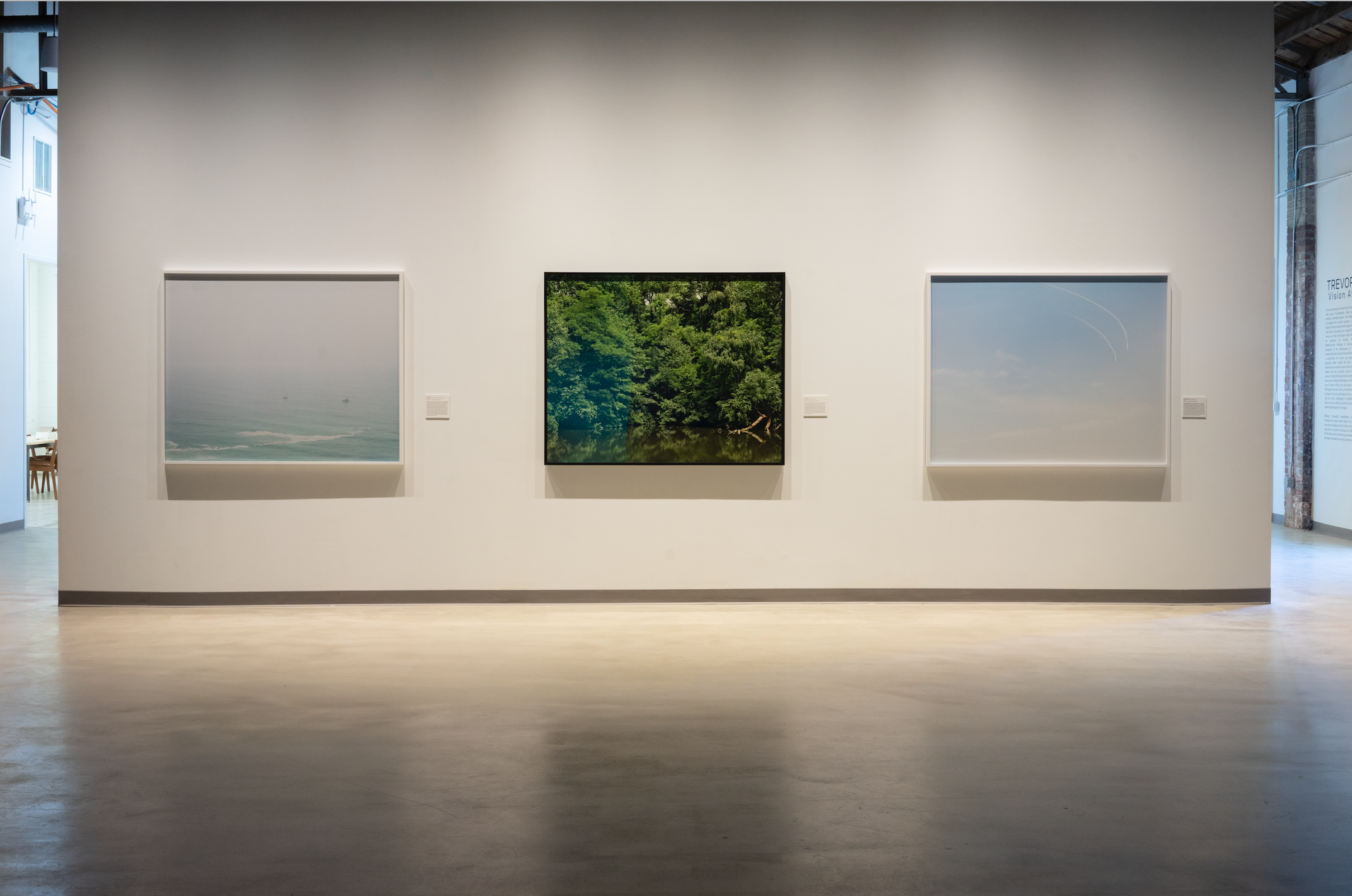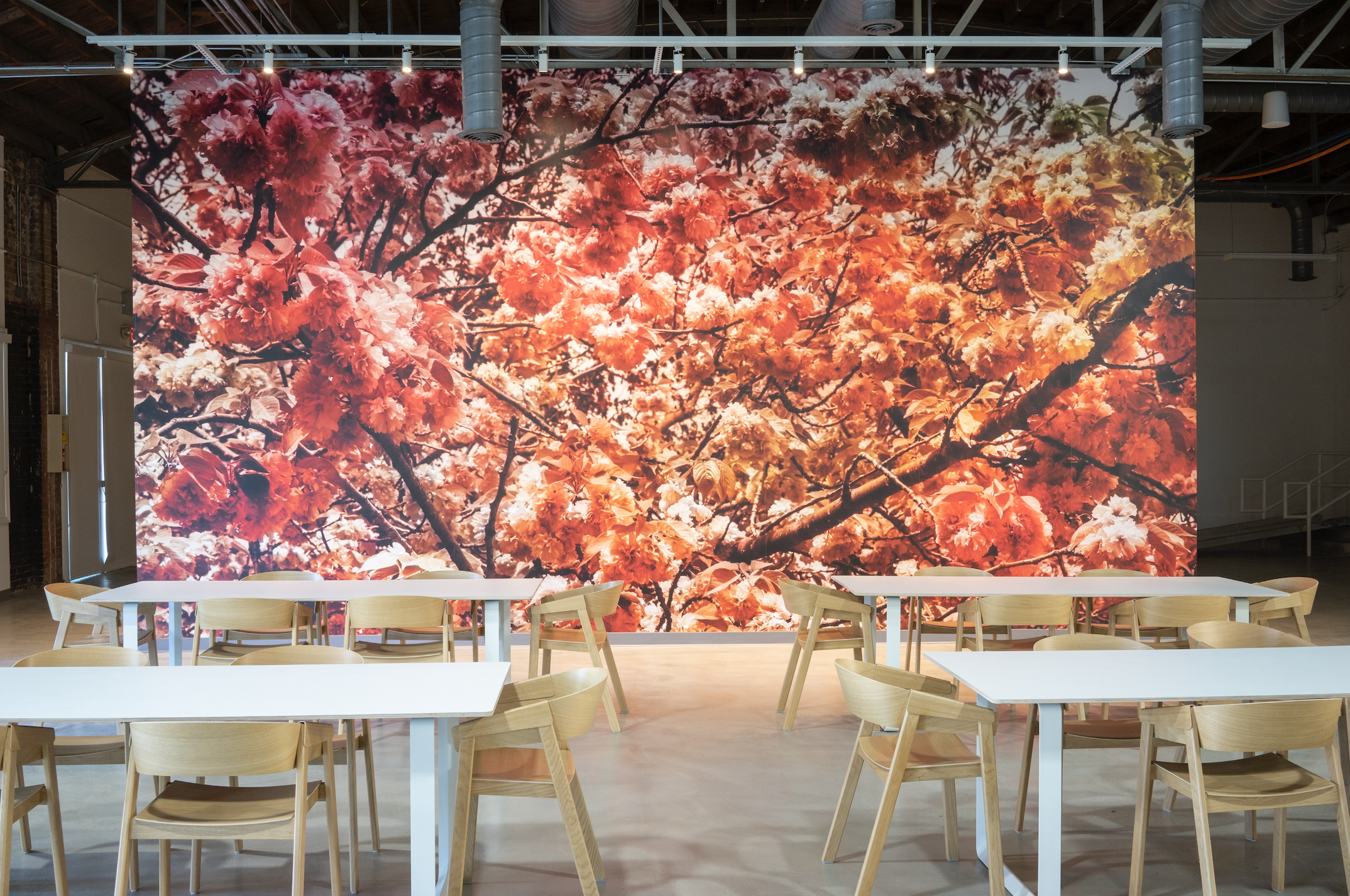Trevor Paglen: Vision After Seeing
Trevor Paglen, Blue #3 (Chelsea), 2016, C-print, 71 x 88.75 inches [courtesy of the Athenaeum]
Share:
Vision After Seeing investigates the fallacies of surface as a means to address geopolitical complexity. The exhibition consists of a silent video, five large-scale photographs, and artist-designed wallpaper. The works appear to offer concision, yet upon further inspection, each initiates a story about boundaries and disclosure.
Paglen, an internationally recognized artist who served as the 2019–2020 University of Georgia Dodd professional chair, toys with the homophones sight and site by partaking in a centuries-long visual art conversation: landscape. Like 19th-century plein air painters, the artist records his environment and collapses vast space into two-dimensional form. Unlike his historical counterparts, Paglen renders the environment by using contemporary image-making tools: cameras, scanners, satellites, and drones. In doing so, Paglen positions photography not as a medium that promises representative fidelity but, instead, as a method with which to collect evidence.
Trevor Paglen, The Last Pictures (an Entangled Bank), 2012, C-print, 48 x 60 inches [courtesy of the Athenaeum]
Drone Vision (2010) is Paglen’s early exploration into what machines see. It is a pixelated, silent projection that pulses with measurements, metrics, and a telescopic vernier. The imagery, collected by an amateur satellite hacker, surveys unnamed terrains. According to the video’s associated text, Paglen said, “Every kind of technology has an inbuilt vision of a society, and it creates that society.” In this work, the viewer is placed behind the unidentified scope of a camera—or, perhaps, a weapon.
On one wall are three lush but seemingly docile images: a diffused-light seascape without a horizon; dense greenery reflected in water; a soft blue sky streaked by a now-absent plane. The images, void of the human figure, appear as familiar descriptions of place. Yet they produce an unease, a lurch in the stomach. The dissonance between what you see and what you feel is described by the wall text. In the case of The Last Pictures (an Entangled Bank) (2012), the text tells the following story: Paglen selected 100 images, many from the public domain, and launched them into space on a unique archival disc he designed with scientists at Massachusetts Institute of Technology. The photographs are projected to circle the earth for the next billion years, outlasting the world and the humans who made it. This grand, ominous, orbital trajectory exists in contrast with the ordinariness of the presented images.
Perhaps the greatest enigma in the exhibition is Blue #3 (Chelsea) (2016), a rich, abstract blue-green speckled photograph. Unlike the distant, arial vantage point in many of the other works, this image explores proximity as a means of obfuscation. The source material is a courtroom sketch from the 2013 trial of Chelsea Manning, a US Army intelligence analyst and whistleblower, who leaked classified documents and was sentenced to 35 years in federal prison. Paglen repeatedly documented the drawing at a granular level with a microscope lens. By stitching the photographs together into a large abstraction, Paglen acknowledges Manning while providing her with anonymity. Manning’s sentence was commuted in January 2017, and she was released four months later.
Trevor Paglen, Vision After Seeing, installation view, 2020 [courtesy of Athenaeum]
Bloom (2020), the most recent work on view, was created for this exhibition during the Covid-19 lockdown. The large-scale brown and pink floral image covers the gallery’s entrance wall. The work depicts the idea of flowers, as opposed to their reality. A composite, the photograph was created by computer vision algorithms after analyzing portions of actual photographs. The colors are distorted, aged as if created with a sepia-tone filter. Here, the familiar beauty of a blooming flower was not found but constructed.
Nature continues to escape the limitations of human sight. Paglen considers how technology fails to recapture the natural world. Paglen wields transgression to become an unexpected storyteller whose work implements narrative and image without relying upon illustrative allegory. Each work speaks to topography but expands upon the visual environment to include the problems of statehood and ongoing ecological disaster. Landscape—here contained within a rectangular frame—recalls romanticism but, more importantly, is where tactical bids for control and dominance often go unseen. For Paglen, description is contentious.
Vision After Seeing is the inaugural exhibition at the Athenaeum, a kunsthalle-style gallery in downtown Athens, GA. The Athenaeum is an airy 5,000-square-foot exhibition space that is affiliated with the University of Georgia and curated by Director of Galleries in the Lamar Dodd School of Art Katie Geha. In addition to the gallery, the site includes workspace and a reading room featuring audiovisual materials relevant to the current show, selected by UGA Art Librarian Lindsey Reynolds. Talks, performances, and other related programming will activate the gallery throughout the run of its exhibitions. The Athenaeum promises to be an exciting destination in the American South for globally relevant contemporary art.
Trevor Paglen, Bloom, installation view, 2020 [courtesy of Athenaeum]
Courtney McClellan is an artist and writer originally from Greensboro, NC. She has served as the Fountainhead Fellow in the Sculpture and Extended Media Department at Virginia Commonwealth University and as the Roman J. Witt Artist in Residence at the University of Michigan. McClellan’s work has been shown nationally. She was named the 2021 Innovator in Residence at the Library of Congress, Washington, DC.


